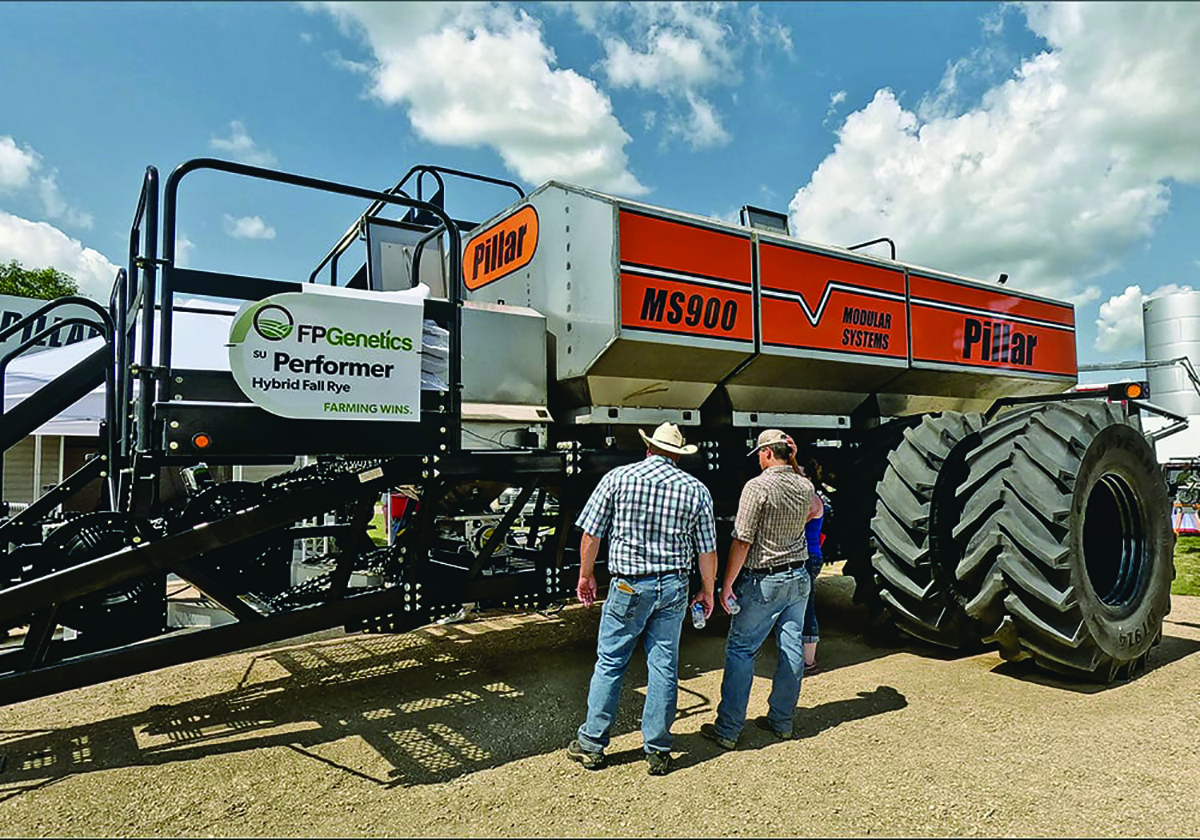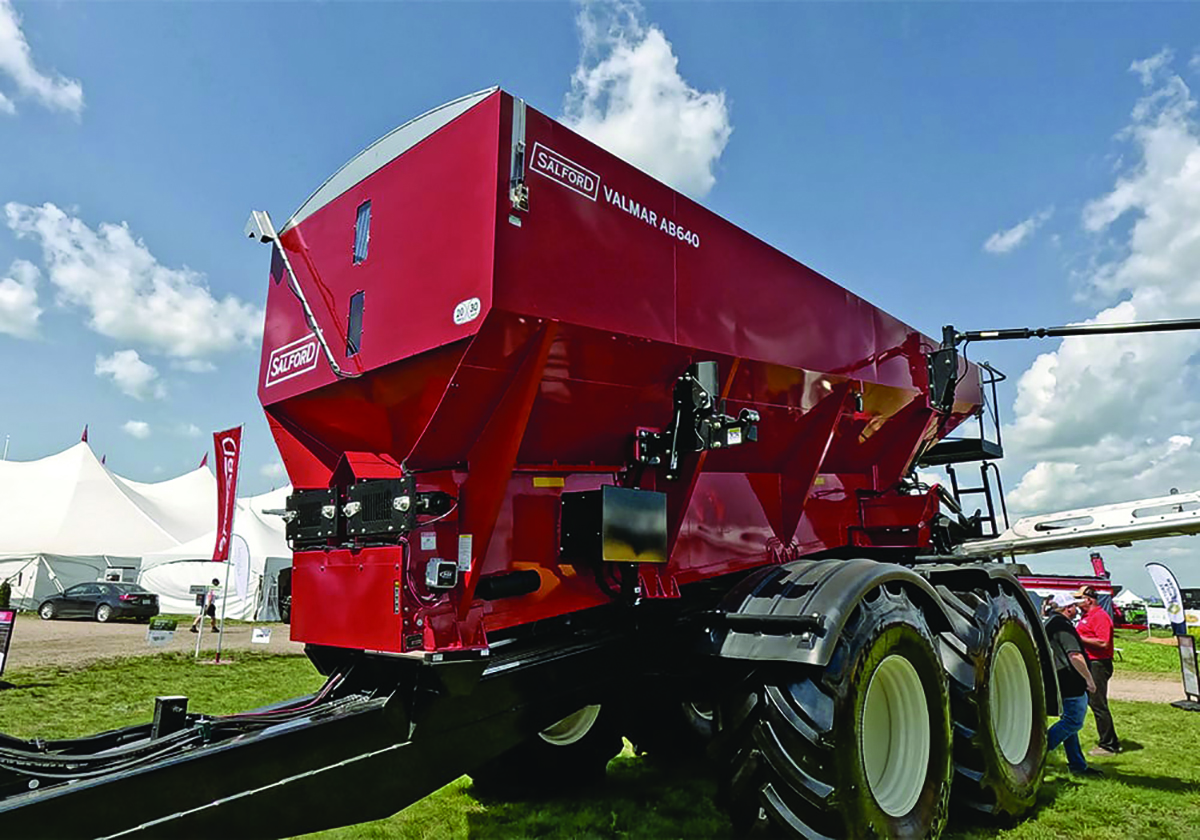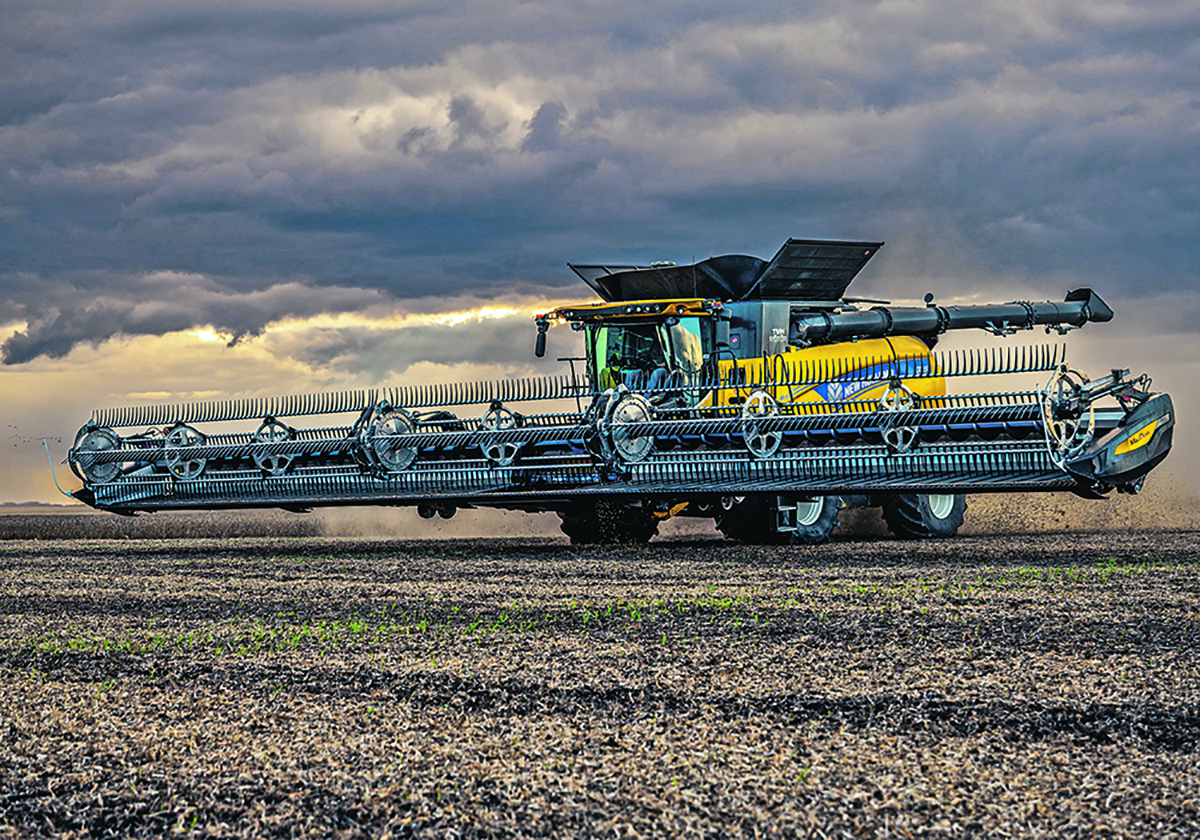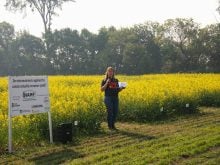MacDon unveils 61-foot draper header
All the major farm equipment brands have Class 10-plus combines on the market, and those machines have big appetites.
Winnipeg-based MacDon has introduced a massive header that can feed those machines fast and keep their hunger satisfied.
Read Also

Fertilizer method’s link to emissions studied
A researcher says others studying greenhouse gas emissions aren’t considering how the loss of nitrogen into the atmosphere correlates with fertilizer application or if there is an impact to yield.
Other stories in the Canola Yearbook 2024:
- A new era for crop genetics
- Shrinking production estimate supports canola bids
- Canola goals must be reassessed to match market reality
- Canola growing season in review
- Canola remains a Prairie economic powerhouse
- Bill C-234 ping pongs between Senate and House
- Canola News Briefs
- Verticillium, blackleg and gophers
- Sustainability incentive for canola growers
- What made canola so strong?
- Science news briefs
- Tiny allies may help withstand drought
- Canola and climate change in Western Canada
- The future of gene editing in canola
- Canola views – photo essay
The 61-foot wide FD261 FlexDraper header will be available in limited quantities for the 2025 harvest season.
“It’ll fit any of the combines our current FD2 (series) will fit on, as long as they have the lift capacity and auger length,” says Russ Henderson, product manager for the FlexDraper line.
“That was one of our goals, to keep it as common as we could with the FD2, just make it larger.
New Combines from Case IH
In February, Case IH pulled the wraps off its Class 10-plus AF11 twin-rotor combine at the National Farm Machinery Show in Louisville, Kentucky, describing 2024 as the year of the combine. By mid-April the red brand had three more new models to debut — the 260 Series.
“You can kind of see we’re calling it the year of the combine for a reason,” says Leo Bose, the company’s harvesting segment leader.
The current 7250, 8250 and 9250 will be replaced by the updated 7260, 8260 and 9260. A big part of the refresh has to do with digital technology. Every machine leaving the Grand Island, Nebraska, assembly plant will have a full suite of digital features built into the base models.
“When you look at the 260 Series, we’ve amped it up with the tech-infused efficiency,” says Bose.
Pillar debuts prototype air cart design
Pillar had more to show at the 2024 Ag In Motion farm show this summer than just its opener and toolbar. It debuted an all-new prototype air cart, which it intends to have in production by next year. The cart on display was an alpha (early) prototype.

Typically, alpha prototype designs are the first iteration built by manufacturers, and they reveal any needed changes or redesign during trials. The resulting updated versions enter the beta stage for the last round of field trials.
“It’s the first new air cart entry in probably 20 years into the air seeding market,” says John Gibson, sales and marketing manager for Pillar Ag.
“The cart is a modular system, designed so it can range anywhere from two to five compartments, including canola. It’s completely stainless steel construction, top to bottom, including the metering system. It can handle liquid and dry fertilizer. There’s no need for a bladder when it comes to handling liquid fertilizer. It’s very adaptable to farmers’ needs, which is what we’re trying to do.”
Pillar anticipates offering the carts in sizes from the 550 to 600 bushel range all the way up to 1,100 bu. in a tow-behind cart. The largest anticipated tow-between model would likely top out at 900 bu.
Light spectrum used to kill weed seeds
Saskatchewan-based Redekop and U.S.-based Global Neighbour Inc. have teamed up to develop a new weed seed destruction system.
It uses a specific spectrum of light to kill weed seeds exiting the combine, rather than the mechanical destruction method used by Redekop’s current seed control unit.
“They (Global Neighbour) have found there’s a certain light spectrum that, when you apply it at the right amount of light and certain amount of time, it can kill the seed,” said Trevor Thiessen, CEO and owner of Redekop.
“If you think about sterilization processes, there’s different ways you can use infrared light. In that context, it’s similar. It impacts the seed in a way that makes it nonviable.
“Global Neighbour had developed the concept of using this. They had done lab-scale tests. Their problem was how do we make this work in a combine setting, which is why we got involved with them because that’s our expertise.”
Redekop has been working for the past two years to adapt what Global Neighbour calls its Directed Energy Flora Control technology for use on a combine.
Bourgault updates two product lines
Bourgault has announced two new features that involve significant design changes on some of its drills.
First, the 3725QDA Coulter drill makes its debut.
“The 3725 was kind of an extension of the 5 Series model, the 3335 when Bourgault went with the quick adjust frame,” said Colin Rush, North American sales and marketing leader at Bourgault.
Second, the XP Duo meter, which will be available on the 3820 Paralink air planter, can supply singulated seed to two separate row units, cutting the number of required meters by half.
“Essentially we’ve created a new machine class now with this XP Duo meter, the air planter and volumetric seeder on the same platform. As crops shift, we’re trying to be more futuristic to match what we think producers’ needs will be.”
New granular applicator gets 90-foot air boom
Growers now have more choices than ever on how to apply a lot of fertilizer in a short amount of time.
In July, Salford introduced its newest and largest air boom applicator. With a 90-foot boom, it goes well past the brand’s previous flagship model, the 9620, which offers 72 feet of working width.

“We’ve been working on this machine quite a bit,” says Gavin Held, Salford’s application product manager.
“This machine has quite a few advances from its predecessor, the 9620. The AB640 gets its name from 640 cubic foot capacity. That is split between the main bin, which is 540 cubic feet, as well as a new 100 cubic foot micro bin in the back.
All the AB640’s systems are hydraulic drive, so the tractor up front will need be able to put out a reasonably good flow rate.
Larger air cart helps keep drills working longer
More capacity was the big news Vaderstad’s staff talked about at their Seed Hawk seeding equipment display during Ag in Motion this past July. The centrepiece of their exhibit was the new PD 1350 air cart, with bushel capacity to match the model number.
“The PD 1350 is an extension of our already proven cart line,” says Vaderstad’s business development manager, Chris Bettschen.
“We already have a PD 400, PD 680, PD 820, PD 1000 and now the big brother to all of them, the PD 1350. It’s exactly what it sounds like, 1,350 bushel capacity, four bins, with our proven Fenix III meters underneath.”
Included in those four bins is a larger canola tank mounted at the front, accessible from the forward catwalk.
“The canola bin on this one is actually quite large. It’s a 93-bushel bin, still at the front of the cart. But this way customers can use it for any product.”

















